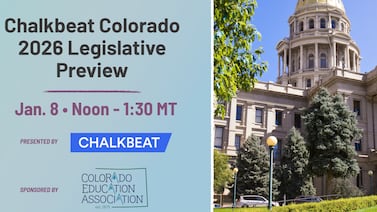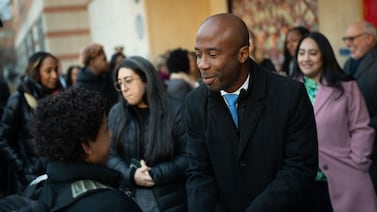The first draft of a proposed map for Chicago’s forthcoming elected school board underrepresents the Latino students who make up about 46% of Chicago Public Schools enrollment, said advocates attending a virtual public hearing on Tuesday.
Advocates who spoke at the Illinois Senate’s Special Committee on the Chicago Elected Representative School Board Districts hearing wanted to see more districts that represent Latino families and to ensure that undocumented residents can vote in future board elections. The latter would require a change to state law.
“Our students need representation who understand their communities and the challenges that they face in their daily life,” said Vanessa Espinoza, a parent with Kids First Chicago. “We know that board members who have shared experiences with the communities they serve can better understand the needs of the students.”
Espinoza called the draft map “unconscionable” because she said it underrepresents Latino families in Chicago. Kids First Chicago has published a map that will create eight Latino districts and seven Black districts, she told lawmakers.
This virtual hearing came after Illinois lawmakers released the draft map last Friday. The proposed map includes seven majority white districts, seven majority Black districts, and six majority Latino districts.
Drawing voting districts and outlining who can vote will be important for the general election in 2024, when Chicago’s Board of Education begins to transition to a fully elected school board. Chicagoans will vote for 10 board members during November 2024 elections, while 10 members and the board president will be appointed by the mayor. The board will become fully elected after the November 2026 general election.
Chicagoans have voiced concerns over the last few months about whether voting districts will reflect Chicago Public Schools enrollment, and have drawn their own maps. Chicago is majority white, while the school district’s student population is 46.5% Latino, 36% Black, 11% white, and 4% Asian American.
It is unusual for lawmakers to use school district enrollment rather than city population numbers to create districts for an elected school board, but advocates say it is the only way to ensure that Black and Latino families are equitably represented.
During Tuesday’s virtual hearing, Balthazar Enriquez, president of the Little Village Community Council, called for more districts representing Latino students and for allowing undocumented residents to vote for their board members.
“The Latino community has half of the population, meaning half of the seats should be Latinos. We only got six seats,” said Enriquez. “When this bill began, the Little Village Community Council was against it because it did not include undocumented families.”
It remains unclear how many maps will be drawn during the general assembly’s map-making process. State lawmakers have published a draft map for 20 districts, and have received nine map proposals from the public, Sen. Kimberly Lightford, who represents that city’s West side and west suburbs, said Tuesday.
Among the maps submitted was one from Illinois African Americans for Equitable Redistricting. That group’s founder and leader, Valerie Leonard, asked lawmakers at Tuesday’s hearing what they planned to do for the first round of elections.
“Will the mayor appoint 10 people to fill the vacancies of 10 districts, while 10 districts will hold elections in 2024? So effectively, only half of our city will be engaged in the election of the school board,” asked Leonard. “Will the 20 districts be coupled so that we effectively have 10 districts now and then you can kind of break them out again in 2026?”
State lawmakers face a July 1 deadline to draw Chicago’s elected school board districts, giving more time for advocates, parents, students, and educators to weigh in on how the map should look.
Samantha Smylie is the state education reporter for Chalkbeat Chicago, covering school districts across the state, legislation, special education, and the state board of education. Contact Samantha at ssmylie@chalkbeat.org.





